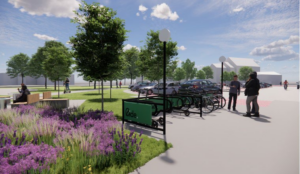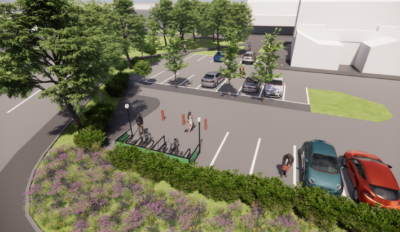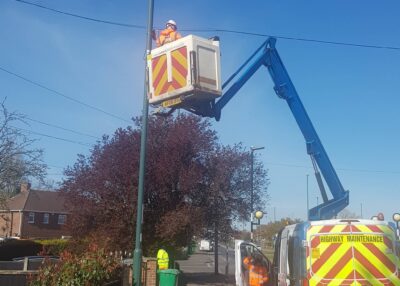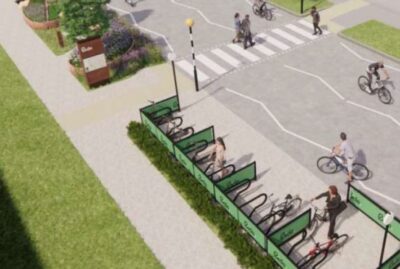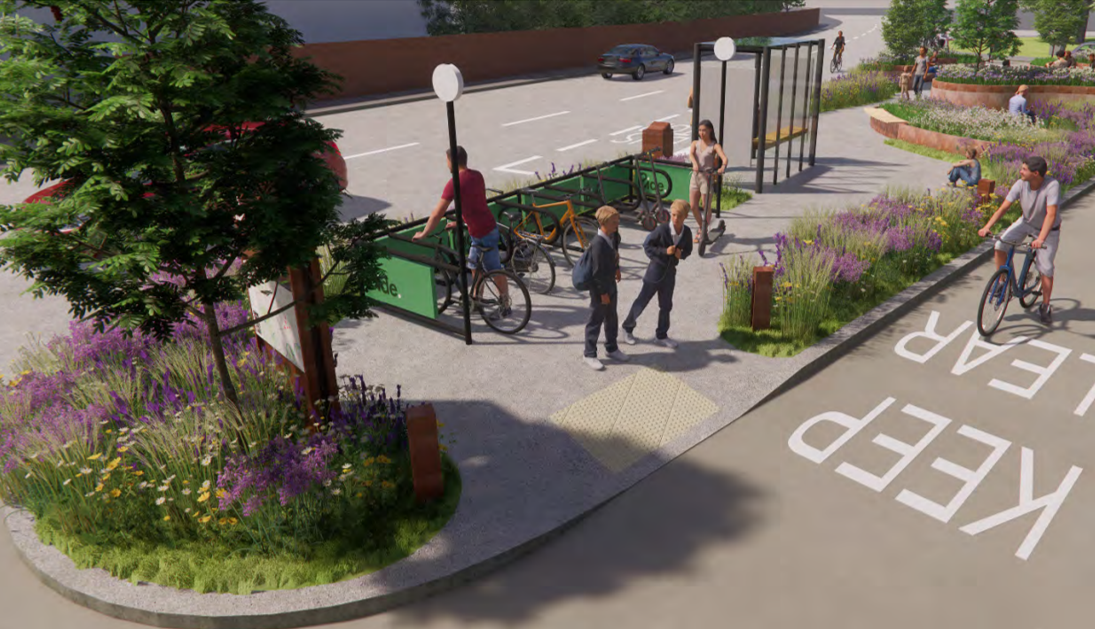
Nottingham City Council has an ambitious plan for transport in our city. We are working to build a sustainable and integrated transport network that allows people to move around easily, quickly, and affordably. We lead the way with trialling new transport technologies, being one of the first cities in the UK to pilot wireless charging for electric taxis, e-scooters and integrated ticketing. As part of this innovation, we are trialling mobility hubs.
What are mobility hubs?
The hubs integrate a variety of active, shared and low-carbon transport modes together in a convenient place while providing connectivity to public transport networks. They will include shared e-bikes and e-scooters hire, electric vehicle charge points, car club rental, and real-time public transport information.
Some of the hubs will also provide bike maintenance stations and public realm improvements including additional planting and seating to be used by the community.
The mobility hubs will be located in accessible locations either close to local centres or transfer points on the integrated transport network.
The mobility hubs aim to:
- Promote a shift to sustainable travel
- Promote a greater sense of place
- Provide an accessible, safe and secure area.
As a minimum, each mobility hub will have:
- At least three modes of transport facilities co-located together e.g. public transport access, car club, e-scooter parking and e-bike hire points.
- Information provision – e.g. an information point, real-time transport information or digital displays.
- Some form of community facility e.g. a meeting space, seating with tables or other amenity.
- Green or environmental features e.g. through tree planting, planters.
- Signage or markers identifying the hub e.g. a totem or pillar.
Key benefits of mobility hubs include:
- Expanding access to key services for the 38% of Nottingham households without access to a car or van.
- Providing health and wellbeing benefits associated with an increase in active travel.
- Improving connectivity between employees, businesses, public transport and public spaces.
- Reducing carbon emissions and local air pollution produced by the transport sector.
What’s next?
- We are looking to implement six sites between November 2024 and the middle of 2025.
- Three of these will be in residential areas within the city.
- Three more will be in local car parks at Bulwell (Bulwell Station), Sherwood (Winchester Street) and the Meadows (The Bridgeway Centre).
- Some of the wider infrastructure such as the e-bike and e-scooter racks, information stands and seating have already been installed at the car park locations – all three sites are expected to be completed and operational in the New Year
- Once the hubs are implemented we will look at how the facilities have been utilised and what has/hasn’t worked. This will help with the potential future phase of developments in other parts of the city to create a network of hubs which integrate with the existing transport network.
